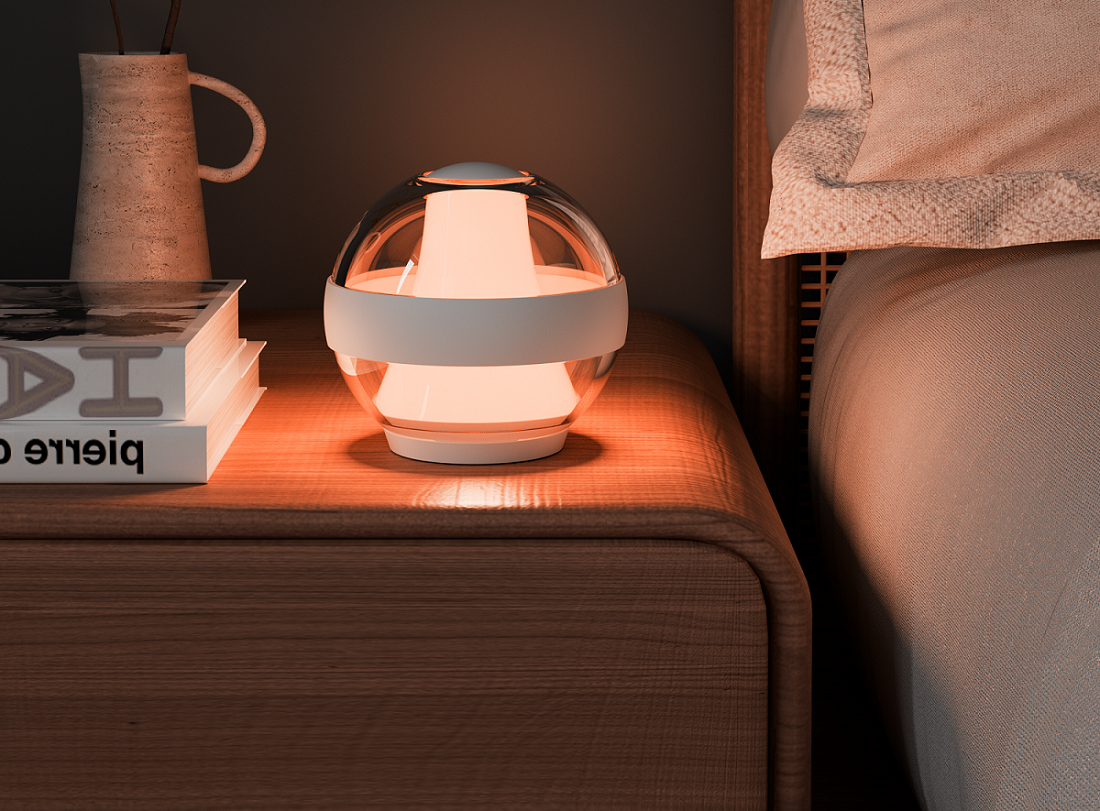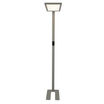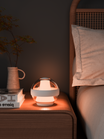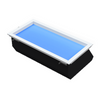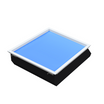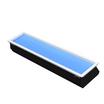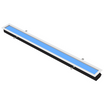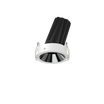Circadian rhythm lighting is no longer a novel concept that everyone may has different understandings of it and it could be from simple color temperature tuning to comprehensive spectral power distribution, or from simple brightness diming to follow the ipRGCs (intrinsically photosensitive retinal ganglion cells) rhythm feature to design the dimming program…here we will introduce five key metrics that the circadian rhythm lighting will never get around of these and they stand for the nonvisual biological effect from light, and understanding these metrics are particularly important for designing the new era of human-centric lighting.
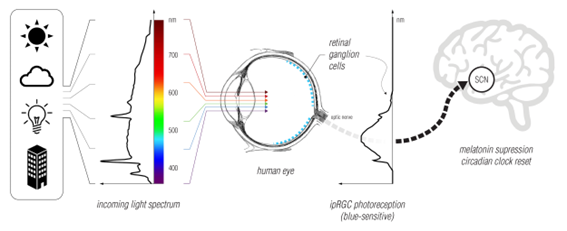
Figure 1. Light -> eye -> ipRGCs -> SCN.
The definition of the metrics of circadian rhythm lighting is highly related to the relationship between the light and ipRGCs, which exist in the retina but unlike the rod and cone cells, ipRGCs does not perceive light intensity and color, but determine the suppression of melatonin very much, and these FIVE metrics are the connection between biological effect and light specifications.
Eh vs Ev.
Before introducing the metrics, it is necessary to emphasize the importance of distinguishing the horizontal illuminance (Eh) and vertical illuminance (Ev). as general measurement for lux, designers probably are used to measuring the light in the horizontal style (Figure 2), this measurement is actually testing the luminaire, or the light from the luminaire to a specific surface; while for the metrics of circadian rhythm lighting are more about vertical illuminance, since the ipRGCs are in the retina, the measurement should trace the light to the eyes, so vertical illuminance is sometimes called the lux to the eyes – it is the real meaning of “human-centric lighting”. For the metrics of circadian rhythm lighting introduced in this article, it is all marked as Ev or lux(vertical) to emphasize we talk about vertical illuminance for wellbeing lighting concept.
Lux (horizontal) vs. Lux (vertical)
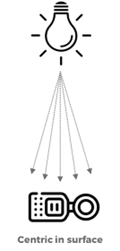
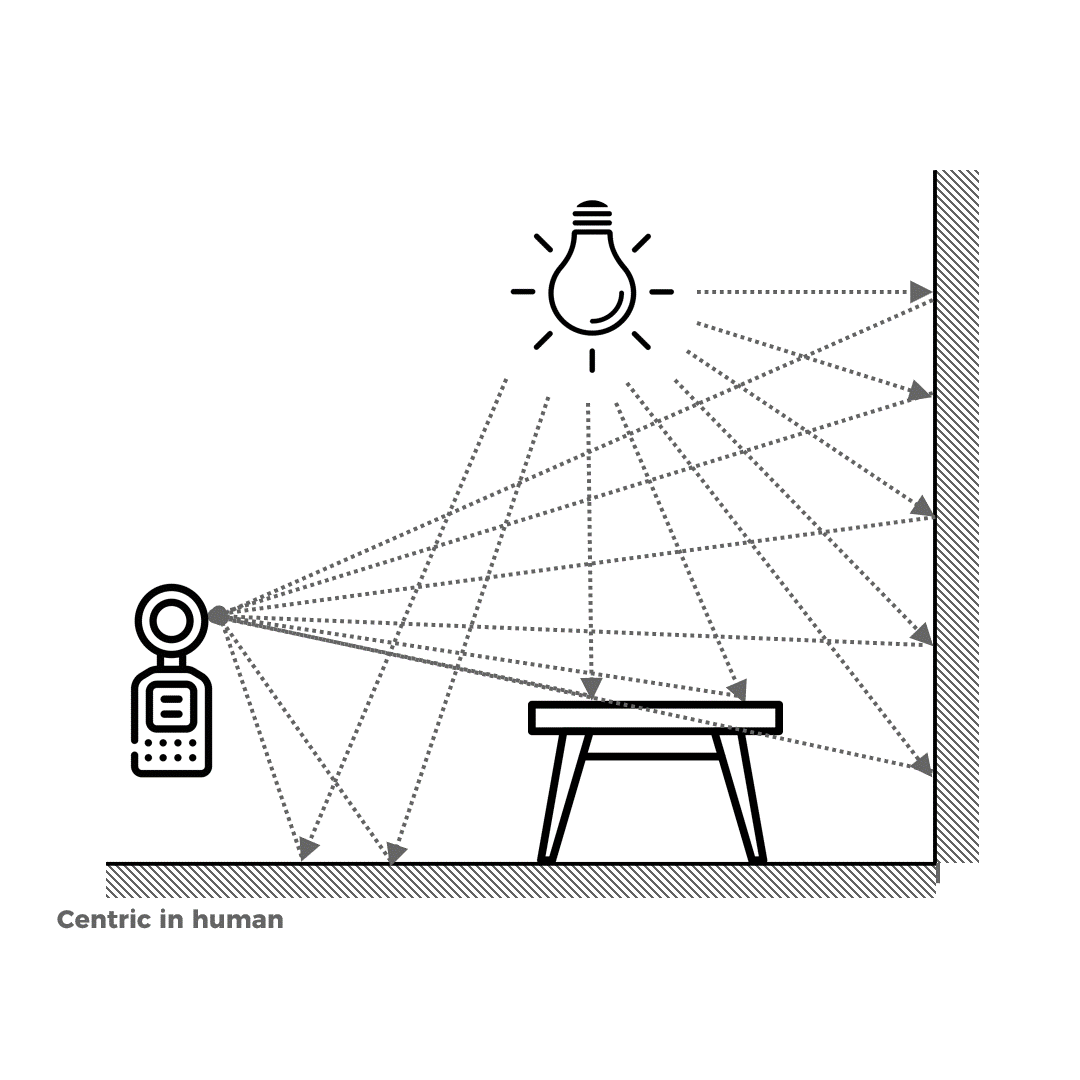
Figure 2. Different measurements of horizontal illuminance and vertical illuminance.
#1. Circadian Stimulus (CS)
CS is firstly defined by LRC, the Lighting Research Center, it is a comprehensive metric including the evaluation of light level, spectrum, timing and duration of exposure. The calculation of CS is quite tedious but it can be concluded as:
- CS has a range from 0 to 0.7;
- For daytime use or for the environment requiring strong circadian stimulus, increasing the lux will significantly increase the CS;
- For nighttime use or for the environment requiring no circadian stimulus, reducing the lux will significantly reduce the CS;
- The spectrum (CCT) does not weight as much as the Ev in the CS calculation.
LRC also defines the qualitative evaluations:
CS < 0.1: low stimulus;
CS > 0.3: sufficient stimulus.

How about different CS values of different light at different Ev? We have measured and calculated natural light at different time and the artificial light with different light sources or color temperatures and list the CS results in Figure 3.
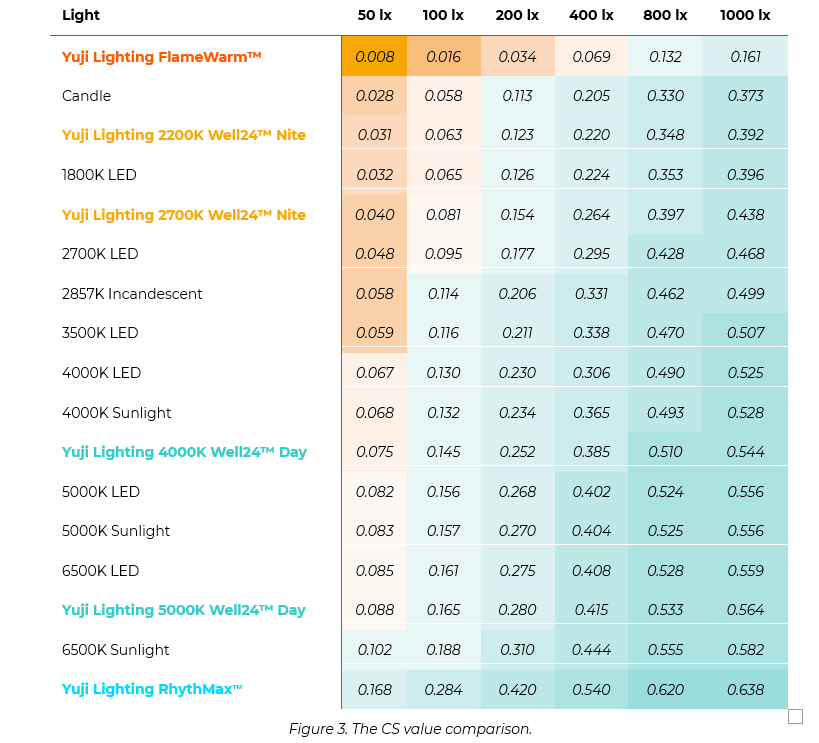
The comparison indicates at least two points that:
1). Brightness, which is the lux at the eyes, is always a key factor determining the circadian stimulus level.
2). Different light sources, which is the spectral power distribution, are also important factors.
#2. Melanopic/Photopic Ratio (M/P, or MR)
M/P ratio measures the lighting spectrum in the non-visual (melanopic efficacy at peak 490nm) and visual wavelength range (photopic efficacy at peak 555nm), compared to the light source of equivalent spectrum (CIE illuminant E) (Figure 4).

Figure 4. The theory of M/P calculation.
Taking a 3000K LED as an example (Figure 5), the M/P ratio measures how much of the overlaps between the 3000K spectrum in the melanopic and photopic efficacy compared to the CIE illuminant E. with the result of M/P=0.476, it means in this 3000K LED, 47.6% of the light brings the circadian stimulus that our eyes perceive relatively compared to the equivalent spectrum.

Figure 5. The M/P calculation of a typical 3000K LED.
High M/P light means it is easier to get alert, focus and productivity and low M/P means it is easier to get relax, cozy and sleepy from the visual light, but it also relies on the lighting design very much.
There is an argument about the rationality of M/P definition and calculation because this metric only offers s single dimension to evaluate the circadian stimulus,
thus IES proposes 4 different methods as alternatives and here we are using the third one in this article.
How about different M/P ratios of different light? We have measured and calculated natural light at different time and the artificial light with different light sources or color temperatures and list the results in Figure 6.
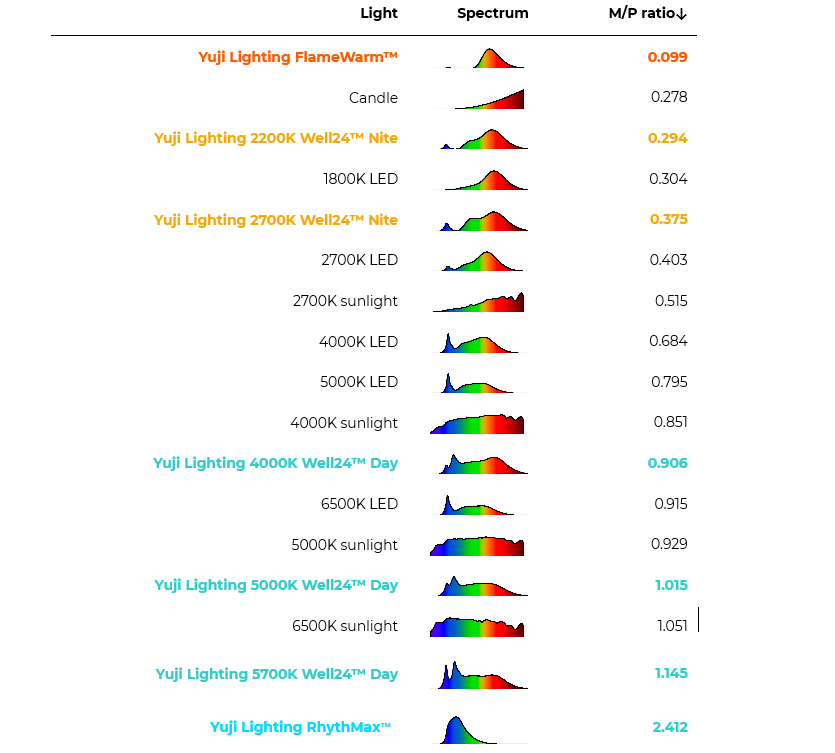
Figure 6. The typical M/P ratios of different light.
#3. Equivalent Melanopic Lux (EML)
EML gives more practical meaning based on M/P. Multiplying by the vertical illuminance at the eyes, the EML shows how much of the visual brightness is effective for the circadian stimulus (Figure 7).


Figure 7. EML = M/P × Ev.
Taking the 3000K LED as example again, with the M/P = 0.476, to achieve the WELL Standard EML > 273lx, the vertical illuminance should be more than 273/0.476 = 573lx.

#4. Melanopic Daylight Efficacy Ratio (M-DER)
M-DER measures the lighting spectrum in the non-visual (melanopic efficacy at peak
490nm) and visual wavelength range (photopic efficacy at peak 555nm), compared to the light source of CIE illuminant D65. Taking the 3000K LED as an example (Figure 8), M-DER measures how much of the overlaps between the 3000K spectrum in the melanopic and photopic efficacy compared to the CIE illuminant D65. With the result of 0.434, it means in this 3000K LED, 43.4% of the light brings the circadian stimulus that our eyes perceive relatively compared to the daylight spectrum.


Figure 8. The M-DER calculation of a typical 3000K LED.
M-DER = 1
The circadian effect of your lights is equivalent to the real sunlight. It is an ideal situation, but difficult to achieve by the common CCTs for general lighting.
M-DER < 1
You need more lights to achieve an equivalent circadian effect to the sunlight if the target of the lighting design requires so.
M-DER > 1
Standard white light LED will not be greater than 1 unless the CCT is creased to be higher than 7500K, but a high CCT will always cause uncomfortableness and
increase the risk of high blue light hazards.
Figure 9 lists the M-DER comparison of different light.
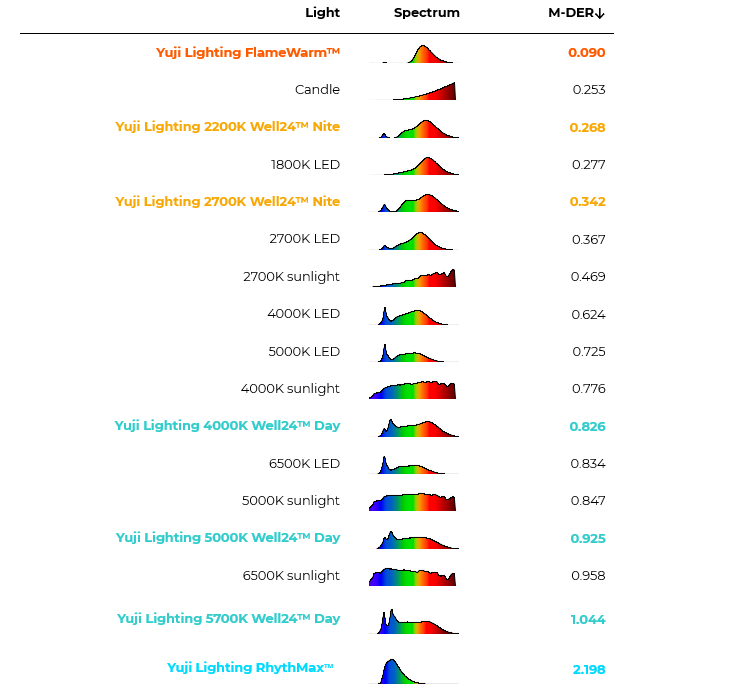
Figure 9. The typical M-DER of different light.
#5. Melanopic Equivalent Daylight Illuminance (M-EDI)
Similar to EML, M-EDI gives more practical meaning based on M-DER. Multiplying by the vertical illuminance at the eyes, the M-EDI shows how much of the visual brightness is effective for the circadian stimulus (Figure 10).
M-EDI =


X

Taking the 3000K LED as example again, with the M-DER = 0.434, to achieve the WELL Standard and CIE Position Statement on integrative lighting of M-DEI > 250lx, the vertical illuminance should be more than 250/0.434 = 576lx.

A summary
The metrics of circadian rhythm lighting are not only these five introduced in the article but they are the most typical ones so far, it is important to note that
which are centric in the luminaire and which are centric in human.
The non-visual metrics of lightings are increasingly attracting attentions since the wellbeing lighting concept is getting more popular. Visual metrics are no longer enough to describe and measure the lighting based on human centric, and Yuji Lighting keeps following up with the latest research and technologies and will update the knowhow continually.
Centric in the luminaire
Melanopic/Photopic Ratio (M/P, MR)
Melanopic Daylight Efficacy Ratio (M-DER)
Centricin human (lighting environment)
Circadian Stimulus (CS)
Equivalent Melanopic Lux (EML)
Melanopic Equivalent Daylight Illuminance
(M-EDI)

